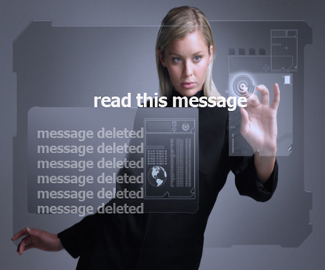 Creating an effective email campaign can be tricky, but when done properly, it can be a powerful marketing tool that can pay off big time. Here are some tips and tricks to creating a great email marketing campaign that will provide value to you, and to your users.
Creating an effective email campaign can be tricky, but when done properly, it can be a powerful marketing tool that can pay off big time. Here are some tips and tricks to creating a great email marketing campaign that will provide value to you, and to your users.
1. The Basic Tools and Rules of Email Marketing
The Tools
While an email marketing campaign can consist of many instruments, these are critical to its success:
- Newsletters
- Personalized mailings and public mailing lists (for market research, support, etc.)
- Autoresponders
- Networking (participating in forums, discussion lists, fairs, etc.)
- Customized logo/company name used throughout (for branding)
The Rules
- Address recipients by name
- Require that subscribers type in their email twice to avoid bad addresses
- Avoid “$” signs in emails. These emails are tagged as spam and will be deleted.
- Write a good subject line in your email. If it looks like spam, your email will likely be deleted.
- Be compliant with the law. Emails should never have misleading subject lines, and should provide valid unsubscribe links.
2. Understand the People on Your List
A critical mistake when creating an email marketing campaign is not understanding the demographics of your list. Things such as open rates, click rates, unsubscribe, complaint rates, etc., all will speak volumes of your audience. The software that you use to manage your email campaigns should monitor these stats, and help segment your list. For example, you should only be sending poker offers to the people on your list who respond to poker. Segmentation will save you a lot of time and money.
3. Create a Newsletter
Creating a newsletter is a great way to get return users to your site. Make sure to insert links to all of your social media pages in your email newsletter: Facebook, Twitter, LinkedIn, Youtube, etc. Always add your logo/company name to your newsletter; this will ensure that recipients make a connection between your newsletter and the rest of the emails you send. And make sure to put newsletter opt-in boxes on every page of your website.
 4. Create a Clear Call to Action
4. Create a Clear Call to Action
Emails can be beautifully designed and have great content, but without a clear message of what you want the reader to do, they become useless. Make sure you display a clear call to action—along with easy to follow instructions on how to do the action. Don’t distract the reader with too many links or offers; if you want the reader to invest in or sign up for something, the process should be as easy as possible.
5. Ensure Email Deliverability
Each ISP has their own way of evaluating how good the mail is that you’re sending, and looks at what are called engagement rates. If your engagement rates are low, this will affect your future deliverability to an inbox. It’s important to send only the right kind of content to the segments of your list that want to see that content (e.g. Yahoo! will has a feedback loop where you can see how many people in your campaign clicked the “this is spam” button). As your engagement rates go up and the complain rates go down, the reputation of your mail servers will go up and more of your email will get to inboxes.
6. Choose the Right Platform
When it comes to choosing a platform, you need to figure out how much daily mail you are going to be sending. A typical email affiliate might send 10-50,000 emails a day. For someone like that, spending the money and maintenance on a custom platform probably isn’t worth the return. Platforms such as RoboMail or Cobini are good for this niche. You should also attend trade shows like Adtech and Affiliate Summit, and look at the different platforms offered there. There are some that cater to large mailers, and those that cater strictly to smaller affiliates.